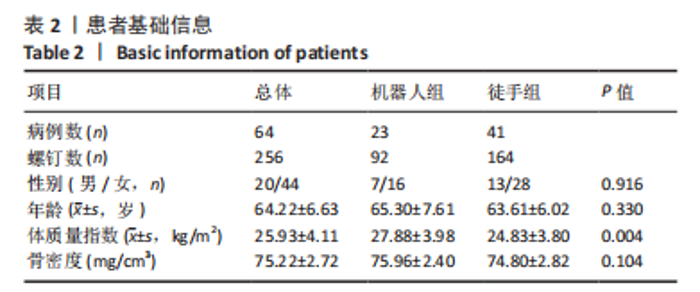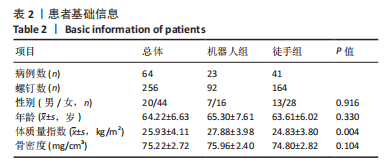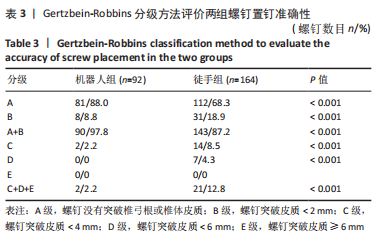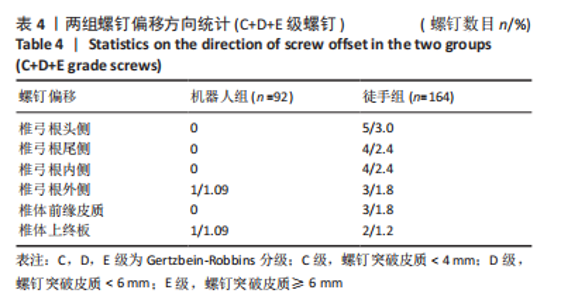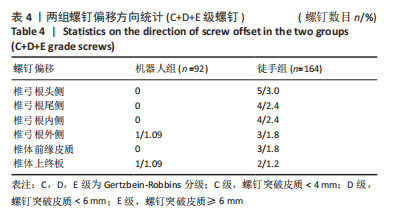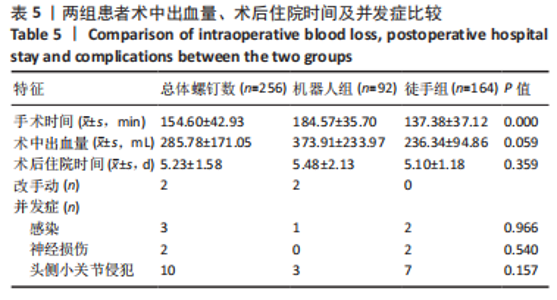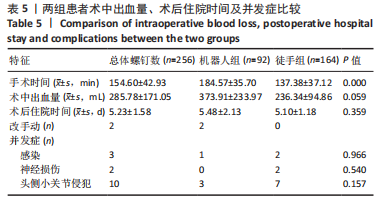[1] WOLFERT AJ, ROMPALA A, BEYER GA, et al. The Impact of Osteoporosis on Adverse Outcomes After Short Fusion for Degenerative Lumbar Disease. J Am Acad Orthop Surg. 2022;30(12):573-579.
[2] EL SA, MEIER S, SANDER A, et al. Reduced loosening rate and loss of correction following posterior stabilization with or without PMMA augmentation of pedicle screws in vertebral fractures in the elderly. Eur J Trauma Emerg Surg. 2013;39(5):455-460.
[3] 白璧辉, 谢兴文, 李鼎鹏, 等. 我国近5年来骨质疏松症流行病学研究现状[J]. 中国骨质疏松杂志,2018,24(2):253-258.
[4] SANTONI BG, HYNES RA, MCGILVRAY KC, et al. Cortical bone trajectory for lumbar pedicle screws. Spine J. 2009;9(5):366-373.
[5] BALUCH DA, PATEL AA, LULLO B, et al. Effect of physiological loads on cortical and traditional pedicle screw fixation. Spine (Phila Pa 1976). 2014;39(22):E1297-E1302.
[6] SANSUR CA, CAFFES NM, IBRAHIMI DM, et al. Biomechanical fixation properties of cortical versus transpedicular screws in the osteoporotic lumbar spine: an in vitro human cadaveric model. J Neurosurg Spine. 2016;25(4):467-476.
[7] MATSUKAWA K, ABE Y, YANAI Y, et al. Regional Hounsfield unit measurement of screw trajectory for predicting pedicle screw fixation using cortical bone trajectory: a retrospective cohort study. Acta Neurochir (Wien). 2018;160(2):405-411.
[8] LE XF, SHI Z, WANG QL, et al. Rate and Risk Factors of Superior Facet Joint Violation during Cortical Bone Trajectory Screw Placement: A Comparison of Robot-Assisted Approach with a Conventional Technique. Orthop Surg. 2020;12(1):133-140.
[9] HUANG M, TETREAULT TA, VAISHNAV A, et al. The current state of navigation in robotic spine surgery. Ann Transl Med.2021;9(1):86.
[10] GERTZBEIN SD, ROBBINS SE. Accuracy of pedicular screw placement in vivo. Spine (Phila Pa 1976). 1990;15(1):11-14.
[11] MATSUKAWA K, TAGUCHI E, YATO Y, et al. Evaluation of the Fixation Strength of Pedicle Screws Using Cortical Bone Trajectory: What Is the Ideal Trajectory for Optimal Fixation?. Spine (Phila Pa 1976). 2015; 40(15):E873-E878.
[12] MATSUKAWA K, YATO Y, KATO T, et al. In vivo analysis of insertional torque during pedicle screwing using cortical bone trajectory technique. Spine (Phila Pa 1976). 2014;39(4):E240-E245.
[13] 付荣华, 耿晓鹏, 付国勇, 等. 椎弓根皮质骨通道与常规通道螺钉治疗骨质疏松性腰椎疾病[J]. 中国矫形外科杂志,2020,28(5):405-410.
[14] SAKAURA H, MIWA T, YAMASHITA T, et al. Posterior lumbar interbody fusion with cortical bone trajectory screw fixation versus posterior lumbar interbody fusion using traditional pedicle screw fixation for degenerative lumbar spondylolisthesis: a comparative study. J Neurosurg Spine. 2016;25(5):591-595.
[15] SAKAURA H, MIWA T, YAMASHITA T, et al. Cortical bone trajectory screw fixation versus traditional pedicle screw fixation for 2-level posterior lumbar interbody fusion: comparison of surgical outcomes for 2-level degenerative lumbar spondylolisthesis. J Neurosurg Spine. 2018;28(1):57-62.
[16] 林书, 胡豇, 万仑, 等. 骨科机器人辅助皮质骨轨迹螺钉内固定治疗腰椎退行性疾病[J]. 中国组织工程研究,2022,26(15):2356-2360.
[17] IWATSUKI K, YOSHIMINE T, OHNISHI Y, et al. Isthmus-guided cortical bone trajectory for pedicle screw insertion. Orthop Surg. 2014;6(3): 244-248.
[18] 王海峰, 曾忠友, 金辉. 后路腰椎椎间融合术中使用皮质骨轨迹螺钉或椎弓根螺钉治疗腰椎退行性疾病[J]. 脊柱外科杂志,2020, 18(1):53-57.
[19] MIZUNO M, KURAISHI K, UMEDA Y, et al. Midline lumbar fusion with cortical bone trajectory screw. Neurol Med Chir (Tokyo). 2014;54(9): 716-721.
[20] DING H, HAN B, HAI Y, et al. The Feasibility of Assessing the Cortical Bone Trajectory Screw Placement Accuracy Using a Traditional Pedicle Screw Insertion Evaluation System. Clin Spine Surg. 2021;34(2): E112-E120.
[21] LI Y, CHEN L, LIU Y, et al. Accuracy and safety of robot-assisted cortical bone trajectory screw placement: a comparison of robot-assisted technique with fluoroscopy-assisted approach. BMC Musculoskelet Disord. 2022;23(1):328.
[22] MOLLIQAJ G, SCHATLO B, ALAID A, et al. Accuracy of robot-guided versus freehand fluoroscopy-assisted pedicle screw insertion in thoracolumbar spinal surgery. Neurosurg Focus. 2017;42(5):E14.
[23] JOSEPH JR, SMITH BW, LIU X, et al. Current applications of robotics in spine surgery: a systematic review of the literature. Neurosurg Focus. 2017;42(5):E2.
[24] VILLARD J, RYANG YM, DEMETRIADES AK, et al. Radiation exposure to the surgeon and the patient during posterior lumbar spinal instrumentation: a prospective randomized comparison of navigated versus non-navigated freehand techniques. Spine (Phila Pa 1976). 2014; 39(13):1004-1009.
[25] SENSAKOVIC WF, O’DELL MC, AGHA A, et al. CT Radiation Dose Reduction in Robot-assisted Pediatric Spinal Surgery. Spine (Phila Pa 1976). 2017;42(7):E417-E424.
[26] KASUKAWA Y, MIYAKOSHI N, HONGO M, et al. Short-Term Results of Transforaminal Lumbar Interbody Fusion Using Pedicle Screw with Cortical Bone Trajectory Compared with Conventional Trajectory. Asian Spine J. 2015;9(3):440-448.
[27] SHAH RR, MOHAMMED S, SAIFUDDIN A, et al. Radiologic evaluation of adjacent superior segment facet joint violation following transpedicular instrumentation of the lumbar spine. Spine (Phila Pa 1976). 2003;28(3): 272-275.
[28] KIM HJ, CHUN HJ, KANG KT, et al. The biomechanical effect of pedicle screws’ insertion angle and position on the superior adjacent segment in 1 segment lumbar fusion. Spine (Phila Pa 1976). 2012;37(19):1637-1644.
|
